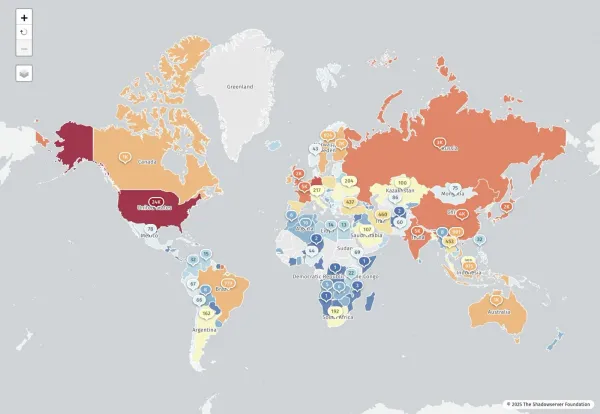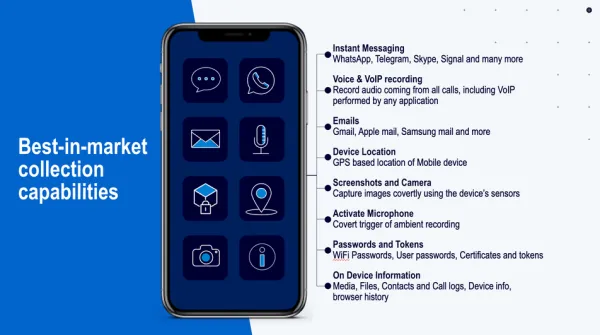When Trust Breaks: How the F5 Breach and Other Vendor Compromises Reshape Market Value

A $2 Billion Warning Shot
Last week, cybersecurity firm F5 lost nearly $2 billion in market capitalization after disclosing that nation-state hackers had maintained long-term access to its systems. The company's stock plummeted 10-12% following the revelation, marking one of the most severe immediate market reactions to a vendor breach in recent memory.
The attackers, attributed to Chinese state-backed hackers, infiltrated F5's network and stole portions of the BIG-IP source code along with information about undisclosed vulnerabilities. According to sources familiar with the matter, the hackers were in the company's network for at least 12 months.
The implications extend far beyond F5's balance sheet. F5 is one of Seattle's largest public tech companies, serving thousands of enterprise customers worldwide, including 80% of the Fortune Global 500. With over 600,000 F5 BIG-IP instances exposed to the internet, the breach represents a massive supply chain risk event with potential ripple effects across governments and enterprises globally.
The Critical Role of BIG-IP
F5's BIG-IP suite of application services is widely used by Fortune 500 companies and government agencies. These systems sit at the critical juncture between users and servers, performing load balancing, access control, and security functions that make them integral to global enterprise infrastructure.
The main concern about the hack of the BIG-IP source code is that the hackers could have found ways to infiltrate those systems to surveil and potentially manipulate traffic. The U.S. Cybersecurity and Infrastructure Security Agency (CISA) issued an emergency directive, warning that nation-state hackers could exploit vulnerabilities in F5 products to gain unauthorized access to credentials and move through company networks.
The Supply Chain Vulnerability Pattern
F5's breach is far from an isolated incident. It represents a troubling pattern where sophisticated attackers increasingly target the technology supply chain—compromising vendors to gain access to their customers' systems. Let's examine how other major vendor breaches have impacted market valuations and what lessons emerge.
CrowdStrike: The Billion-Dollar Stumble That Didn't Stick
In July 2024, CrowdStrike experienced what experts called the largest IT outage in history. The cybersecurity company lost nearly $11 billion in market value overnight after a faulty software update caused widespread chaos across airlines, banks, and other industries. The outage affected roughly 8.5 million Windows systems, causing the infamous "blue screen of death" and disrupting various sectors globally.
In total, CrowdStrike's stock price fell from $343 the day before the outage to a low of $218 on August 2—a loss of over $30 billion or more than a third of its total market capitalization.
But here's where CrowdStrike's story diverges dramatically: As of January 2025, the company's stock price was over $400, an all-time high, helped by a perfect score on an industry test for ransomware detection and improvements to its quality control processes. Despite causing an estimated $10 billion in worldwide financial damage, CrowdStrike managed to retain customer loyalty and rebuild trust remarkably quickly.
Why did CrowdStrike recover? The incident wasn't a security breach—it was a quality control failure. The company responded swiftly with a fix, implemented additional safeguards, and most importantly, competitors couldn't capitalize because they faced similar risks in their own update processes. The company added checks for the specific problem after the outage, introduced additional tests and deployment layers, and hired two independent software security vendors to review its code and processes.
SolarWinds: The Breach That Changed Everything
The SolarWinds breach of 2020 represents the opposite trajectory. When news broke that Russian-linked hackers had compromised SolarWinds' Orion software, the company's share price plummeted roughly 22-23%. Within a week, the stock fell 40%.
The attackers inserted a backdoor into SolarWinds software updates in March 2020, allowing them to gain access to the networks of approximately 18,000 organizations that installed the malicious update. Multiple U.S. government agencies, including the Defense Department, State Department, and Department of Homeland Security, were compromised.
Unlike CrowdStrike, SolarWinds never fully recovered. When the breach was revealed in December 2020, the company's stock price plummeted by more than a third. Following the data breach, investors filed a securities class action against SolarWinds, which eventually settled for $26 million. The SEC also charged both SolarWinds and its Chief Information Security Officer with fraud and internal control failures.
The long-term damage was severe. The week the breach came to light, SolarWinds' market capitalization dropped 23%, and though the company's revenue growth wasn't entirely interrupted, it has continued at a slow pace. By 2023, the company was reportedly exploring a sale, with its market capitalization at approximately $1.5 billion—a far cry from its pre-breach valuation.
Okta: Death by a Thousand Cuts
Identity management provider Okta offers perhaps the most cautionary tale about repeated security incidents. The company experienced multiple breaches between 2022 and 2023, each time eroding market confidence.
The 2022 LAPSUS$ Breach: In January 2022, the hacker group LAPSUS$ obtained sensitive customer data, but Okta took two months to reveal the full extent of the incident. When the company finally disclosed details on March 22, 2022, the stock dropped 11%, wiping $6 billion from the company's market value within just a week.
The company failed to enforce its "Zero Trust" security standards on third-party vendors, leading to critical vulnerabilities that LAPSUS$ exploited. A group of shareholders sued Okta in May 2022, and the company eventually agreed to pay $60 million to settle the lawsuit.
The 2023 Support System Breach: In October 2023, hackers compromised Okta's support case management system, and the company lost more than $2 billion in market cap following the disclosure. The company's stock fell 8.1% on the day of the announcement.
At least one customer, identity management firm BeyondTrust, said it had alerted Okta about suspicious activity weeks earlier on October 2, but Okta didn't initially acknowledge the incident as a breach. This delayed response echoed the communication failures from the 2022 incident.
The cumulative impact was devastating. Despite revenue increasing substantially from $399 million in 2019 to $2.26 billion in 2023, Okta's stock declined 35% over that five-year period.
The Trust Multiplier: Why Vendor Breaches Hit Harder
These cases reveal a critical pattern: when vendors in the security or infrastructure space are compromised, the market impact is amplified by a "trust multiplier effect." Here's why:
1. Supply Chain Amplification
A single vendor compromise can cascade to thousands of downstream customers. Cortex Xpanse identifies over 600,000 F5 BIG-IP instances exposed to the internet, meaning the F5 breach potentially affects hundreds of thousands of organizations globally.
2. Privileged Position Betrayal
These vendors are trusted with the keys to the kingdom. F5's BIG-IP products sit between users and servers, directing traffic and blocking malicious requests. When that trusted position is exploited, the psychological impact on customers is profound.
3. Information Asymmetry
The theft of undisclosed vulnerability data is particularly dangerous because it grants threat actors the capacity to exploit vulnerabilities for which no public patch currently exists. This creates an extended period of exposure before customers can even begin to protect themselves.
4. Competitive Alternatives
Market reaction depends heavily on whether customers can easily switch providers. CrowdStrike recovered partly because its competitors face similar update risks. SolarWinds struggled because customers could migrate to alternative monitoring solutions.
5. Response Quality Matters
CrowdStrike's CEO personally apologized, the company added multiple layers of quality checks, and hired independent reviewers. In contrast, Okta initially denied the breach and took two months to fully disclose the 2022 incident, severely damaging trust.
What This Means for CISOs and IT Leaders
The F5 breach underscores several critical lessons for organizations dependent on third-party infrastructure:
Immediate Actions:
- Organizations using F5 products should immediately implement the company's mitigation and hardening guidance and begin threat hunting activities
- Audit all solutions that have agents with automatic update capabilities
- Review and test incident response plans specifically for supply chain compromises
Strategic Considerations:
- Following the CrowdStrike outage, 84% of companies reported they are either considering diversifying their software and service providers or are already doing so
- Build redundancy into critical infrastructure where feasible
- Implement defense-in-depth strategies that don't rely on a single vendor's security posture
Long-Term Resilience: The interconnected nature of modern technology infrastructure means supply chain compromises are no longer "if" but "when" scenarios. Organizations need to build resilience assuming their vendors will be compromised at some point.
The Unforgiving Market
The stark difference between CrowdStrike's recovery and the ongoing struggles of SolarWinds and Okta illustrates a fundamental truth: the market forgives mistakes, but not breaches.
A software defect, however catastrophic, can be fixed and trust can be rebuilt if the response is swift and thorough. But a security breach—especially one involving nation-state actors gaining extended access to source code and vulnerability data—represents a fundamental failure of the vendor's core promise.
As CISA Acting Director Madhu Gottumukkala stated: "The alarming ease with which these vulnerabilities can be exploited by malicious actors demands immediate and decisive action from all federal agencies. These same risks extend to any organization using this technology, potentially leading to a catastrophic compromise of critical information systems."
For F5, the path forward will be challenging. The company must not only patch its systems and rebuild its internal security posture but also help potentially hundreds of thousands of customers assess whether they've been compromised. The attackers had at least 12 months of access before being detected, leaving a long timeline for potential exploitation.
The Broader Warning
These incidents collectively sound an alarm about the fragility of our interconnected digital infrastructure. As software supply chains grow more complex and attackers grow more sophisticated, the traditional perimeters of cybersecurity dissolve.
The F5 breach, coming on the heels of CrowdStrike's outage and years after SolarWinds, demonstrates that even the most established security and infrastructure vendors remain vulnerable. The $2 billion market cap loss is just the visible tip of the iceberg—beneath the surface lie incalculable costs in incident response, customer trust, regulatory scrutiny, and potential litigation.
For technology vendors, the message is clear: security isn't just a feature—it's the foundation of your business valuation. In an interconnected world where a single breach can compromise thousands of organizations, the market's judgment is swift and, increasingly, unforgiving.
The F5 breach investigation is ongoing. Organizations using F5 products should consult the company's security advisories and implement recommended mitigations immediately.





